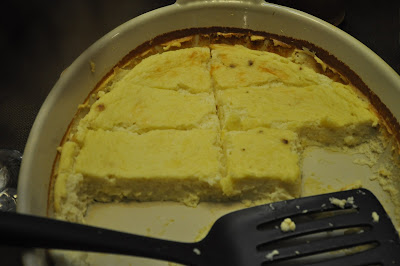
We'd been lucky up 'till now. Sure, sometimes I enjoyed thinking that it was due to our merit, but overall, we'd been aware that Babygirl's grand experimental appetite was something to be celebrated, and very much a part of her personality. I mean, she used to eat whatever we'd put on her plate with gusto.
Alas, it is no more.
As of a week ago, due to mysterious reasons (most likely being almost two years old), Babygirl has decided that she no longer likes vegetables and many previously beloved fruits. It's an annoying setback, but certainly nothing to fret over. While I'd prefer that she eat wholesome balanced meals with a healthy heap of leafy greens, it's also true that even if this new development not ideal, she will still survive and thrive. We will keep offering her healthy food options off our own plates and maybe she'll have some, maybe she wont, but in the end, as long as she's having some lean proteins, fruits and some good carbs, nothing is too tragic.
Our main focus is keeping meals happy occasions. I never want to force Babygirl to eat anything against her will, and have her hate dinner time as a result. And while I'm not above "hiding" veggies in the recipes, I still think she needs to be aware of exactly what she's putting in her mouth. It's a trust thing, really. If I tell her something is a bite of chicken, but it's actually chicken and mushrooms (which can look similar due to their coloring, but definitely taste different), then she might not trust me again next time I offer her chicken. Right?
So far this problem hasn't been too daunting, because she has picked her favorites, and they're mostly healthy and simple to prepare. We'll see how this progresses, and I'm mentally preparing myself for much worse. Meanwhile, I still refuse to accommodate this pickiness too much. We are not running an a-la-carte kitchen here, after all.
Foods she still loves: chicken (cooked in any way imaginable), rice (brown and white), whole wheat pasta, turkey deli meat, salmon, bananas, apples, oranges, cheddar cheese, greek yogurt, butternut squash, tomatoes depending on the preparation, tortillas, whole wheat bread, whole-wheat waffles, crackers
Foods she used to love and is now refusing: zucchini, mushrooms, hamburger, yellow squash, peas, blueberries, grapes, asparagus, strawberries, carrots, mashed potatoes, hummus
Foods she loves and I wish she didn't like so much: french fries, goldfish crackers, cupcakes (any type of cake, really, she can spot those a mile away)
And she refuses to drink any type of juice, which is still very amusing.








